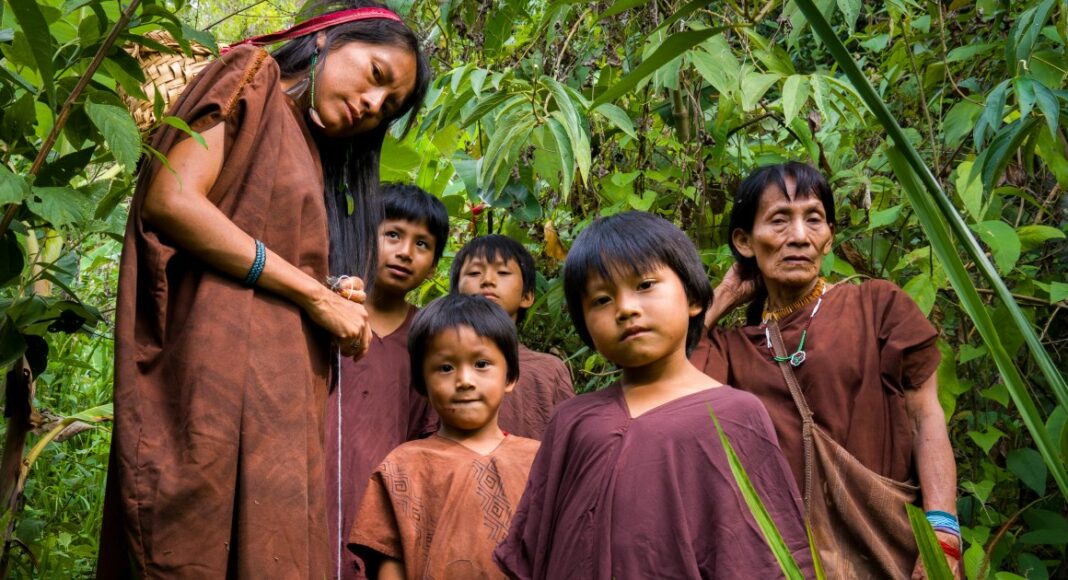Wearing a tunic the colour of red earth and a headdress crested with ruby macaw feathers, Samaniego describes how his village, home to 150 people, has always defined itself in relation to the forests around it.
Marankiari itself means “serpent” in the Ashaninka language. When Samaniego’s grandfather Miguel first settled his family here, the region teemed with snakes, tapirs and large man-eating cats, immortalised in stories told by firelight.
“All of this land is connected to our legends,” said Samaniego. But those species have long since vanished, he added, as the rainforest rapidly shrinks.
In 2022 alone, Peru’s Amazon lost 144,682 hectares (357,517 acres) of old-growth forest, according to the Monitoring of the Andean Amazon Project, a conservation nonprofit. Small-scale agriculture has fueled much of that destruction.
Strolling through his village, 68-year-old Tsonkiri Samaniego — Tsitsiri Samaniego’s uncle — plays a haunting melody on a handmade flute. He forages wild reeds to make the instrument himself, in order to pass on the music his grandfathers taught him.
But the reeds too have grown scarce. Each year, more land is encroached upon, Tsonkiri explained. What worries him most is the steady unravelling of Ashaninka culture and language, both deeply rooted in the natural world.
Tsonkiri Samaniego plays a pan flute made of reeds he collected from the nearby forest [Neil Giardino/Al Jazeera]
As a child, Tsonkiri remembers hunting deer, wild turkey and partridge in the unbroken forest. In those years, a heavy silence permeated the village, only interrupted by the stories told at nightfall over crackling bonfires.
But around the time Tsonkiri was born, a change was falling over the valley. Tsonkiri traces it back to the “coffee boom” of the 1940s, when coffee consumption peaked in countries like the United States — and farmers in Peru responded by cultivating forested land along the eastern slopes of the Andes.
Tsonkiri claims that, back then, his grandparents and parents were forced into indentured labour, toiling long hours on industrial farms in exchange for payment in goods.
Their exploitation did not end there. In the early 1950s, Tsonkiri said commercial farmers conned his family into surrendering hundreds of hectares of ancestral land in exchange for clothing and five crates of canned fish.
When Miguel, his father, died in 1972, Tsonkiri assumed the role of village leader. He was only 17 years old at the time. In 1978, he helped earn San Miguel Centro Marankiari the legal title to 147 hectares (363 acres), a small sum compared with the vast territory once occupied by his ancestors.
The villagers, however, have no legal claim to their most sacred sites in the Perene Valley, including salt mines, caves and mountains steeped in history and lore. Many of those sites fell into the hands of private owners, putting them off limits to the Ashaninka people.
“Before, our territory was never delineated. We were free, like the animals, to roam from place to place. When we were reduced to living on parcelled land, our territory was suddenly limited,” said Tsonkiri. “We can’t enter certain parts or hunt freely. It has been a type of prison.”



